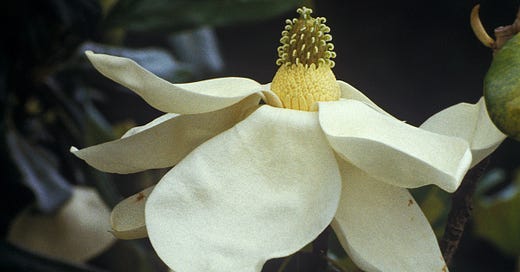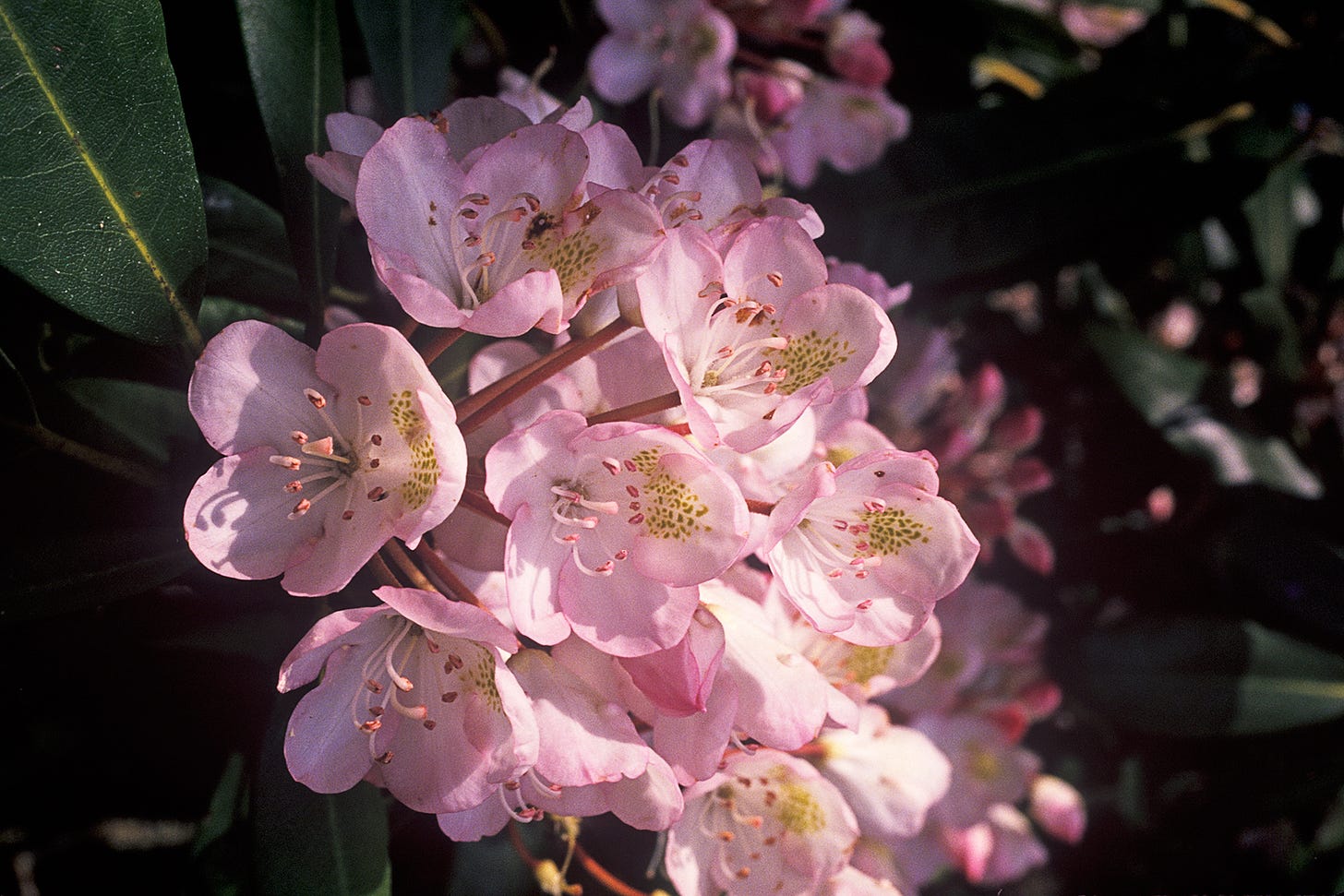New to this publication? Check out my directory, “The Journey So Far.”
In an earlier edition, I cited four authors as early literary naturalists connected to Chattanooga, Tennessee. I am sure there are other Southern nature writers from the eras of Walker, Miles, Steele, and Torrey, and I would love to hear about them, for nature writing is as much about the author as the natural world.
I welcome the mention of any names in the comment section with some trepidation. The number will likely exceed my available time to read them all. Please mention them, nevertheless. You may catch the interest of another reader who will discover the joy of reading their works.
William Bartram, 1739-1823
William Bartram of Philadelphia traveled in the American southeast between 1773 and 1777, recording lists of plants and sending specimens to Dr. John Fothergill in England for propagation. He recorded the landscape and the indigenous people and settlers. James and Johnson of Philadelphia published his book, now known as Bartram’s Travels, in 1791.
I have yet to discover any extensive comments on Tennessee in Bartram’s writings, other than a description of the Tennessee River, which he called the Cherokee River. He noted its outflow into the Ohio and, thus, the Mississippi. He also described the Tenasi River, which may have been the river now known as the Little Tennessee.
Bartram’s descriptions of indigenous people include the Seminole, Creek, Cherokee, and Choctaw, which he spelled Chactaw. I have discovered no references to the Chickasaw, which reinforces my belief that he did not include western Tennessee in his travels. He also described the Yuchi, which he spelled Uchi. He told of two adjoining towns that spoke different languages, the one Creek and the other Yuchi. Those villages were located on the “Chatta Uchi” River, likely the river now known as the Chattahoochee.
I have not read the full text but frequently return to my copy of The Library of America edition, which includes the 425-page Travels, a 100-page report to Dr. John Fothergill, a reply to inquiries about the region’s Indigenous people, and several shorter works. https://loa.org/writers/300-william-bartram.
Bartram is mentioned in The Great Naturalists, edited by Robert Huxley. https://www.goodreads.com/review/show/3037516651.
A Bartram Biography appears on the website of The Florida Museum.https://www.floridamuseum.ufl.edu/naturalists/bartram/.
Another appears on the website of The Georgia Historical Society: https://georgiahistory.com/education-outreach/online-exhibits/featured-historical-figures/william-bartram/brief-biography/.
I recently discovered Bartram’s Living Legacy, published by Mercer University Press, a volume with the entire text of the Travels, followed by essays from contemporary nature writers. Editor Dorinda G. Dallmeyer referred to Bartram as the Thoreau of the South. My aging eyes appreciate the typography with its larger font and spacing.
I have been reading the section on the Cherokee Country because it is near where I live in Tennessee, though more relevant to North Carolina. He traveled through Agusta, Georgia, and South Carolina to reach the region.
Christopher Camuto’s essay in the contemporary writers' section is a nice concurrent read for this section. He references his own book, Another Country, Journeying Toward the Cherokee Mountains. https://www.goodreads.com/book/show/8648595-bartram-s-living-legacy.
André Michaux 1746-1802
Michaux was among the early European botanists to explore the American South. He made several trips through Tennessee. Louis XVI appointed him to collect specimens shipped to France for preservation, propagation, and study. His son François André Michaux was also noteworthy. Their work seems to have become conflated in some references.
Although he wrote extensively about North America and its natural world, his influence is limited among English-speaking authors because he wrote in French. This is less true for Botanists because his name appears repeatedly in botanical nomenclature.
The abbreviated form of his name, Michx appears following the Latinized names of several plants, crediting him as having assigned the name. A list of plants he named appears online: https://www.michaux.org/plantscarolina.htm:
Many plants are named in his honor. The Carolina Lily, Lilium michauxii, is one of many named for Michaux.
The Abbeville Press has issued The Trees of North America: Michaux and Redouté's American Masterpiece with translated text. The publisher also included additional illustrations and an afterword by esteemed artist and writer David Allen Sibley. https://www.abbeville.com/products/the-trees-of-north-america
The University of Alabama Press has released a collection of journals and letters translated from the original text under the title Andre Michaux in North America. http://uapress.ua.edu/product/Andr%C3%A9-Michaux-in-North-America,7404.aspx
His other works are largely out of print, but some are available through used book vendors. Be sure you are getting a translation if you can't read French.
The Tennessee Native Plant Society includes Michaux in its Tennessee Botanist Hall of Fame. The document includes several brief biographies, so scroll to the end of the page for information on Michaux. https://www.tnps.org/hall-of-fame/
The website of the Tipton-Hanes Historic Site in northeast Tennessee includes information about Michaux's visit to the region. He stayed at the house there on one of his visits to Tennessee. http://www.tipton-haynes.org/research/history/andre-michaux/
Mark Catesby 1683-1749
When I hear this name, I think of the lovely Catesby’s Trillium, Trillium catesbaei: https://www.fs.usda.gov/wildflowers/plant-of-the-week/trillium_catesbaei.shtml. I make this association because I first noticed the name Catesby shortly after moving to Chattanooga in 1990 and discovering the plant in flower. I was surprised to learn that he is sometimes called the father of American ornithology.
In his book, The Natural History of Carolina, Florida, and the Bahama Islands, Catesby made an exhaustive inventory of the natural world in these areas. He collected plant specimens and sent them to England for cultivation. An internet search of Catesby’s name revealed that the art world also celebrates him, and his prints are collectors’ items.
The Great Naturalists, edited by Robert Huxley, includes a lovely article about Catesby by Steve Cafferty. This magnificent book is worthy of mentioning. The editor is the Head of Collections, Botany Department, the Natural History Museum, London. The stories begin with Aristotle and end with Asa Gray, the noted author of Gray’s Manual of Botany: https://huh.harvard.edu/book/grays-manual-botany.
My comments here only briefly introduce early nature writing in the Southeast and America in General. Additional authors are there to discover in Huxley’s book and elsewhere.






